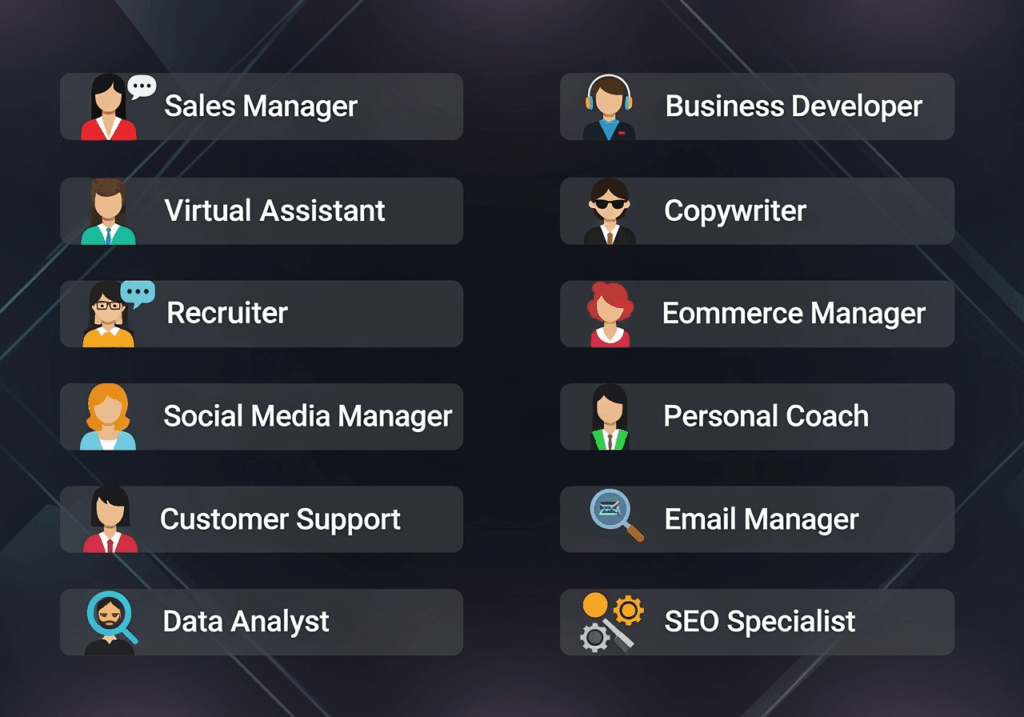How rethinking every business process around our AI-first company is changing the game for our portfolio – and what founders need to know.
Why TomcoCapital Went AI-First
At TomcoCapital, we made a decision early on: whenever we face a business challenge or need, we ask a simple question – can an AI-first company solve this faster, smarter, and with less friction than a traditional team? The answer, more often than not, is yes.
After selling my last business and getting a clean slate, I had zero interest in rebuilding the same human-heavy, slow-moving org chart. The world has changed. AI isn’t a gimmick anymore – it’s the competitive edge. That’s why every new portfolio company we launch, acquire, or scale starts with this mindset: automate first, hire later (if at all).
The difference isn’t just about efficiency or cost. It’s about building companies that are leaner, more adaptable, and fundamentally prepared for the business landscape that’s already here – not the one we left behind.
We don’t default to human resources for operational problems. We default to AI. Only after AI has hit its limit do we assign a person—whose time is then focused on strategy, relationship-building, and high-leverage creative work.
The net result: our companies move faster, spend less, and scale smarter. In a market defined by volatility and relentless competition, this isn’t just a cool tech experiment. It’s how you win.
Inside the AI Team – What Our Agents Actually Do
The real power of an AI-first company isn’t just that AI can handle simple, repetitive work. It’s how broad and deep the capabilities now go across our entire business stack.
At TomcoCapital and our portfolio companies, our AI agents aren’t just running social or cranking out blogs – they’re actively replacing or augmenting roles you’d normally need to hire for. Here’s a snapshot of what our AI team manages every week:

- Copywriting & Content Marketing:
AI writes, edits, and optimizes web pages, ebooks, case studies, and even technical documentation. Our “AI copywriter” can handle everything from product pitches to long-form guides – faster and often with fewer errors than a human. - Website & Product Updates:
Want to add a new feature, fix a bug, or update pricing tables? AI writes the copy, generates the code, and often pushes changes live to production. What once took days now takes minutes. - Customer Support & Service:
Incoming emails and support tickets are automatically triaged, answered, or escalated – 24/7. The AI doesn’t sleep or get frustrated. Simple inquiries are resolved instantly; complex cases are flagged for a human, who now handles far fewer tickets. - SEO & Analytics:
AI reviews all outbound content for SEO performance, suggests improvements, and analyzes traffic/usage logs. We know what’s working and what isn’t, in real time, with actionable recommendations – not just reports gathering dust. - Sales Operations:
AI agents help update pricing, research prospects, draft outreach emails, and follow up on leads. Our sales pipeline is more active, more organized, and less dependent on human error. - Marketing Automation:
Newsletters, nurture campaigns, and social posts are scheduled, written, and A/B tested by AI. Marketing email copy is customized to audience segments, then launched and tracked – all hands-off. - Business Development & Research:
AI finds and analyzes potential business opportunities, identifies new partners or acquisition targets, and even does preliminary due diligence. - Ecommerce & Product Management:
Inventory, pricing, and product descriptions are managed by AI. Site changes, promos, and updates go live without waiting for a human bottleneck. - Personal Productivity:
My own “virtual assistant” AI manages my calendar, flags key emails, and even prompts me to hit my health goals or follow up on critical projects. - Recruiting & HR:
Our recruiting agent can source candidates, screen for basic qualifications, and schedule interviews, though, ironically, we haven’t needed to use it yet.
Bottom line:
Nearly every role below senior leadership can now be at least partially replaced, accelerated, or supported by AI. Our “team” is a real, dynamic roster of digital employees – always on, always learning, and immune to office drama.
What’s Left for Humans (and Why That Matters More Than Ever)
Does this mean people are obsolete? Not even close. The reality is, in an AI-first company, the bar for human contribution gets higher – not lower. AI crushes the grunt work, the repetition, the tasks that used to chew up your best people’s time and patience. But it can’t replace vision, strategy, leadership, creativity, or the human touch required for high-stakes deals and nuanced judgment.
Here’s how we deploy our human capital now:
- Strategy & Vision: Humans set direction, make bets, and decide which mountains to climb. AI can analyze data and suggest tactics, but it can’t replace gut instinct or experience.
- Relationship-Building: From investor relations to key partnerships, trust and persuasion are still deeply human skills.
- Complex Problem-Solving: When a situation is ambiguous, political, or requires cross-domain thinking, you need people—not just pattern-matching algorithms.
- Innovation & Big Ideas: True breakthroughs – whether in product, business model, or go-to-market – rarely emerge from code alone.
- Final Accountability: At the end of the day, a company needs real leadership. Someone has to take responsibility for the big calls AI isn’t built to make.
By freeing humans from busywork, we let them work on what actually drives value and competitive advantage. In fact, our team is smaller, but every person is working closer to the top of their skill stack.
This isn’t anti-people. It’s pro-talent. When you let AI handle everything it’s good at, you can finally let your best people focus on what only they can do.
Lessons Learned & Advice for Founders and Investors
Here’s the truth from the trenches: building an AI-first company is not a theoretical play – it’s a competitive necessity. And it’s moving faster than even the tech press is reporting. Most leaders are either sleepwalking into irrelevance or tinkering at the edges while their competitors are quietly eating their lunch.
What I’ve learned:
- Don’t wait for perfection: If you hold out for flawless AI, you’ll be left behind. Deploy, test, refine – iterate weekly, not yearly.
- Audit ruthlessly: Every process, every workflow, every department. If an AI tool can do 80% of the job, that’s 80% of time and cost back in your pocket.
- Upskill your humans: The people who thrive here are the ones who can direct, supervise, and quality-check AI. You want operators who treat AI as leverage, not as a threat.
- Expect resistance: You’ll get pushback from people invested in the old way. That’s fine – progress doesn’t wait for permission.
- Measure the right things: Speed, adaptability, and margin matter more than headcount or legacy org charts.
My advice:
Stop thinking of AI as “tech support” and start thinking of it as your operations backbone. Build around it, not on top of it. The companies that win in the next decade will be those who made AI their core operating system, not a bolt-on afterthought.
If you’re still hiring armies for jobs that AI can do better, faster, and cheaper – you’re not building for the future. You’re just adding risk and friction.
The New Playbook – Are You Ready to Compete This Way?
The landscape has shifted. The old metrics – headcount, square footage, layers of management – don’t mean what they used to. The winning formula now is simple: fewer people, more leverage, relentless automation, and the courage to let go of how things “have always been done.”
If you’re a founder, operator, or investor and still building companies the traditional way, here’s your wake-up call. Start treating AI as your first hire, not your last resort.
Audit your processes, challenge your assumptions, and get uncomfortable.
It’s not about being trendy; it’s about survival and having a real edge.
This is exactly what I work on with our portfolio founders and with a select group of coaching clients who are serious about building lean, AI-first businesses that scale with less risk and more upside.
If you’re ready to leave excuses behind and actually transform how you build, book a call with me.



